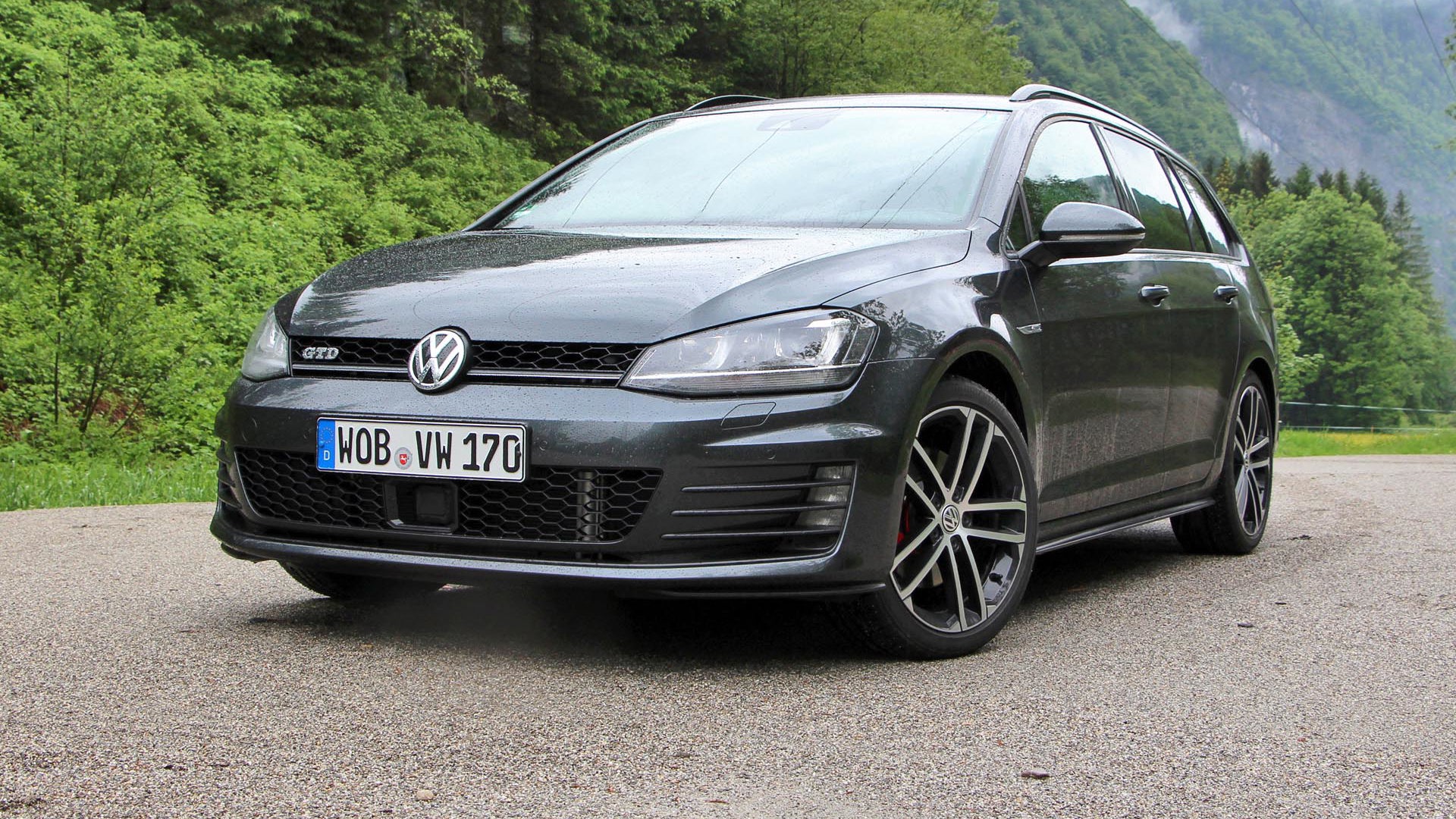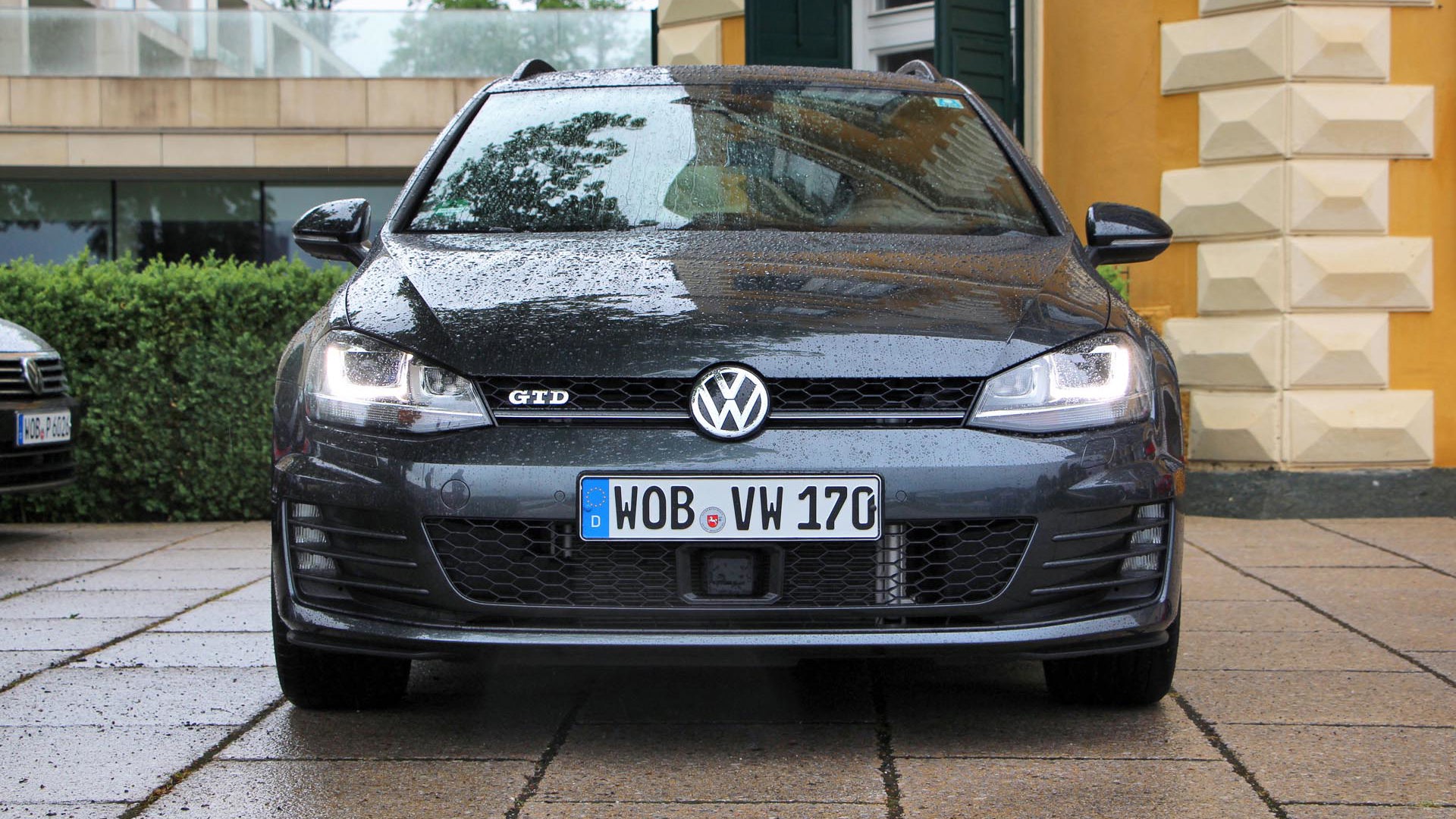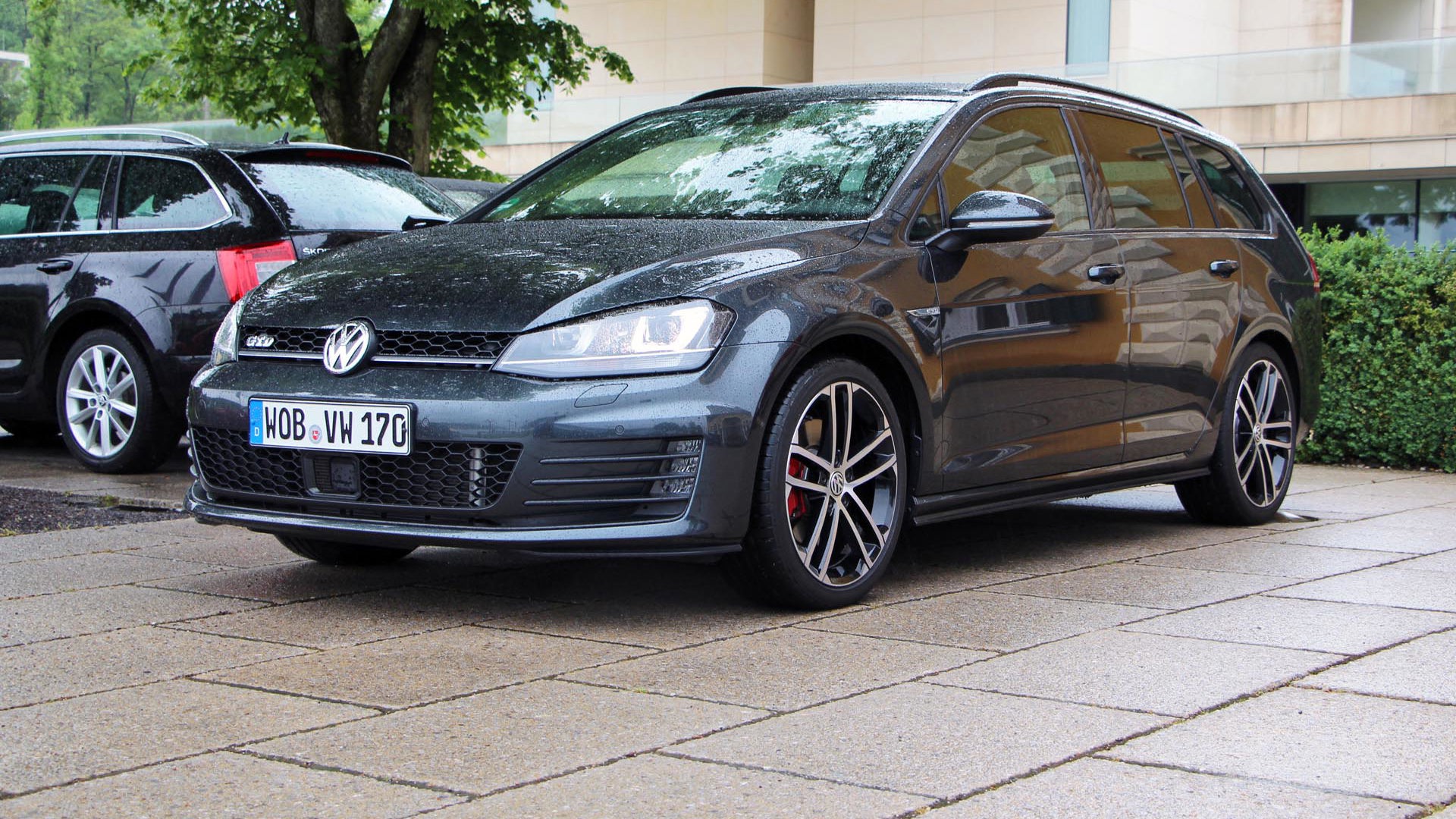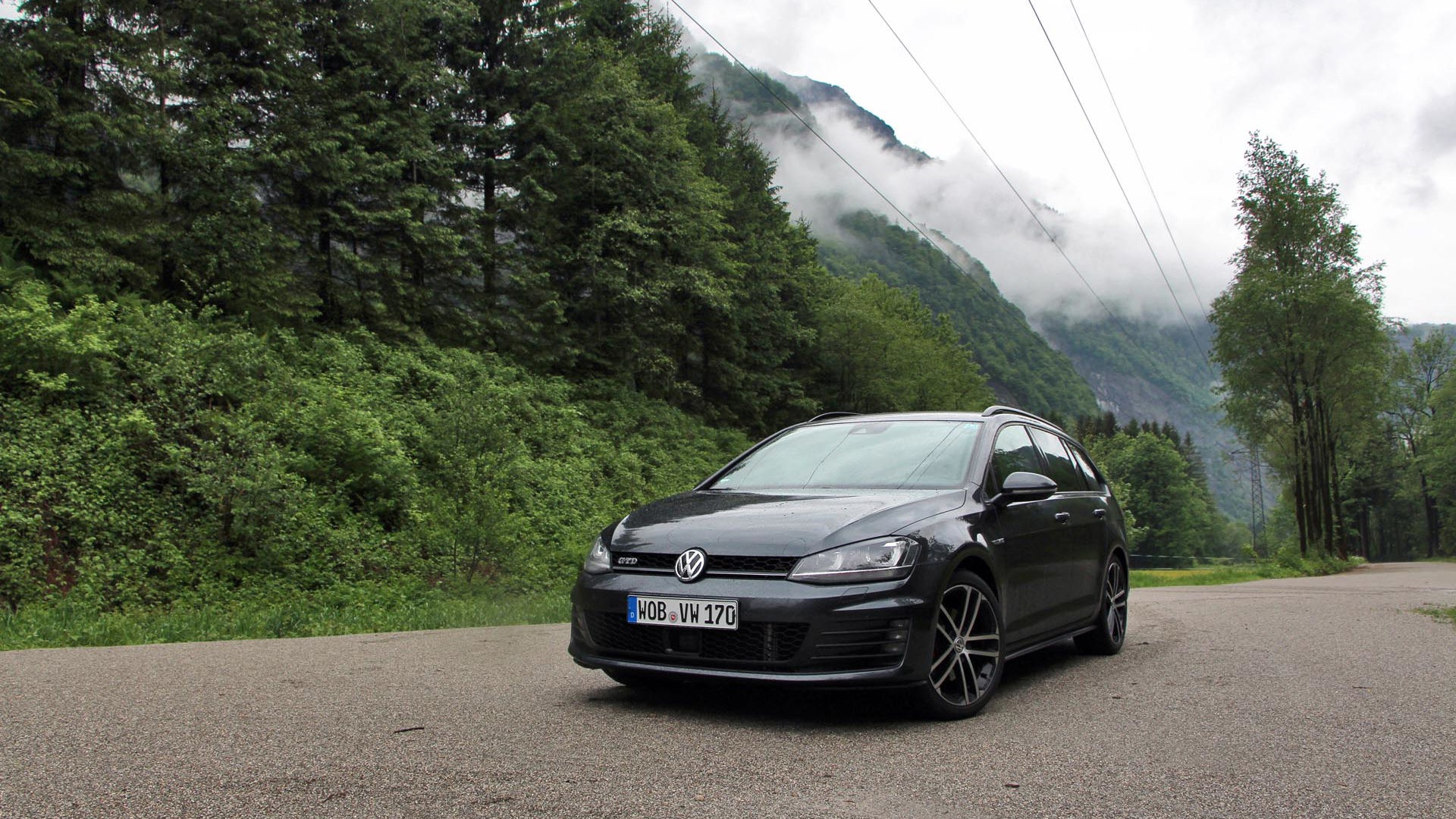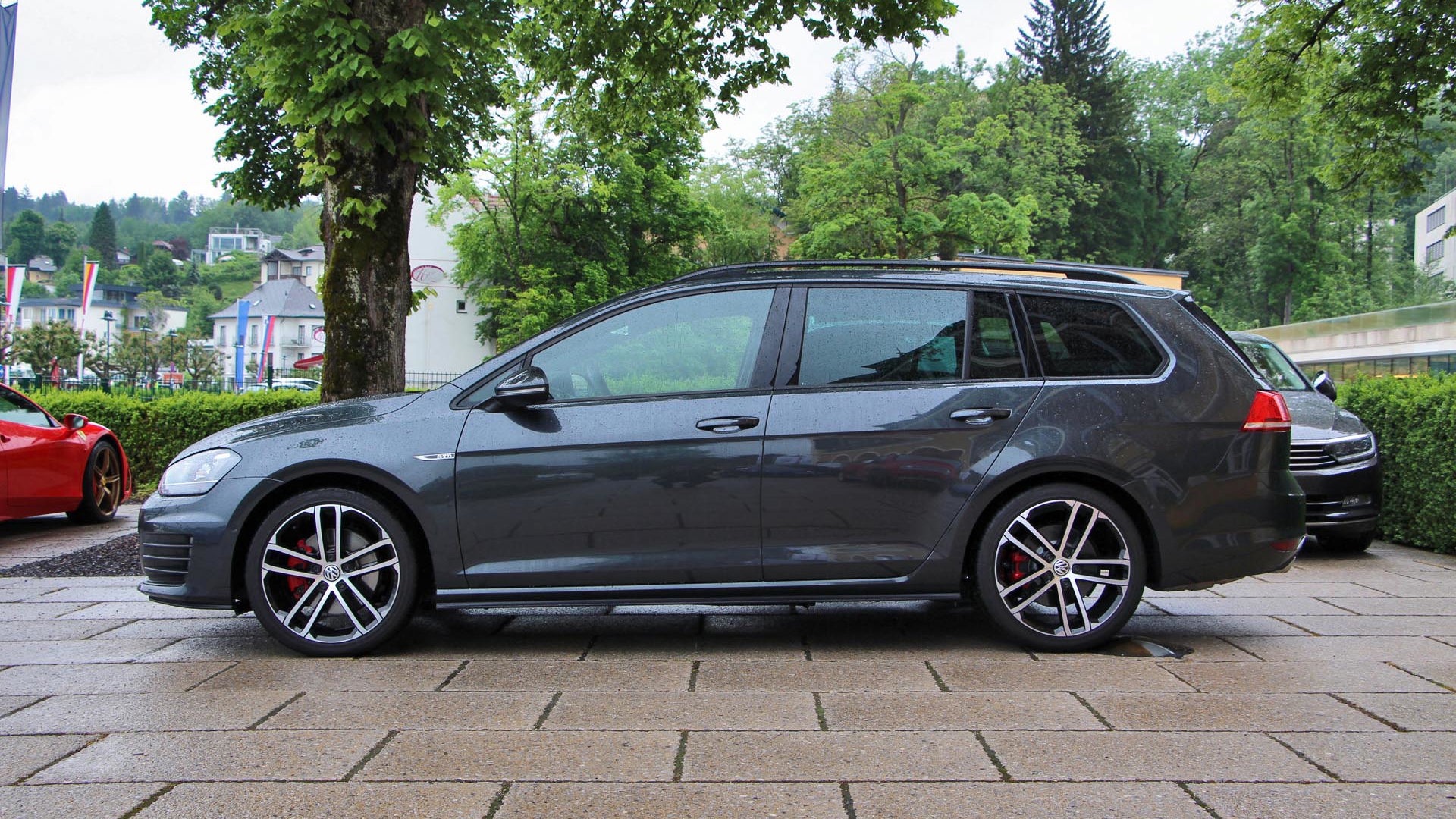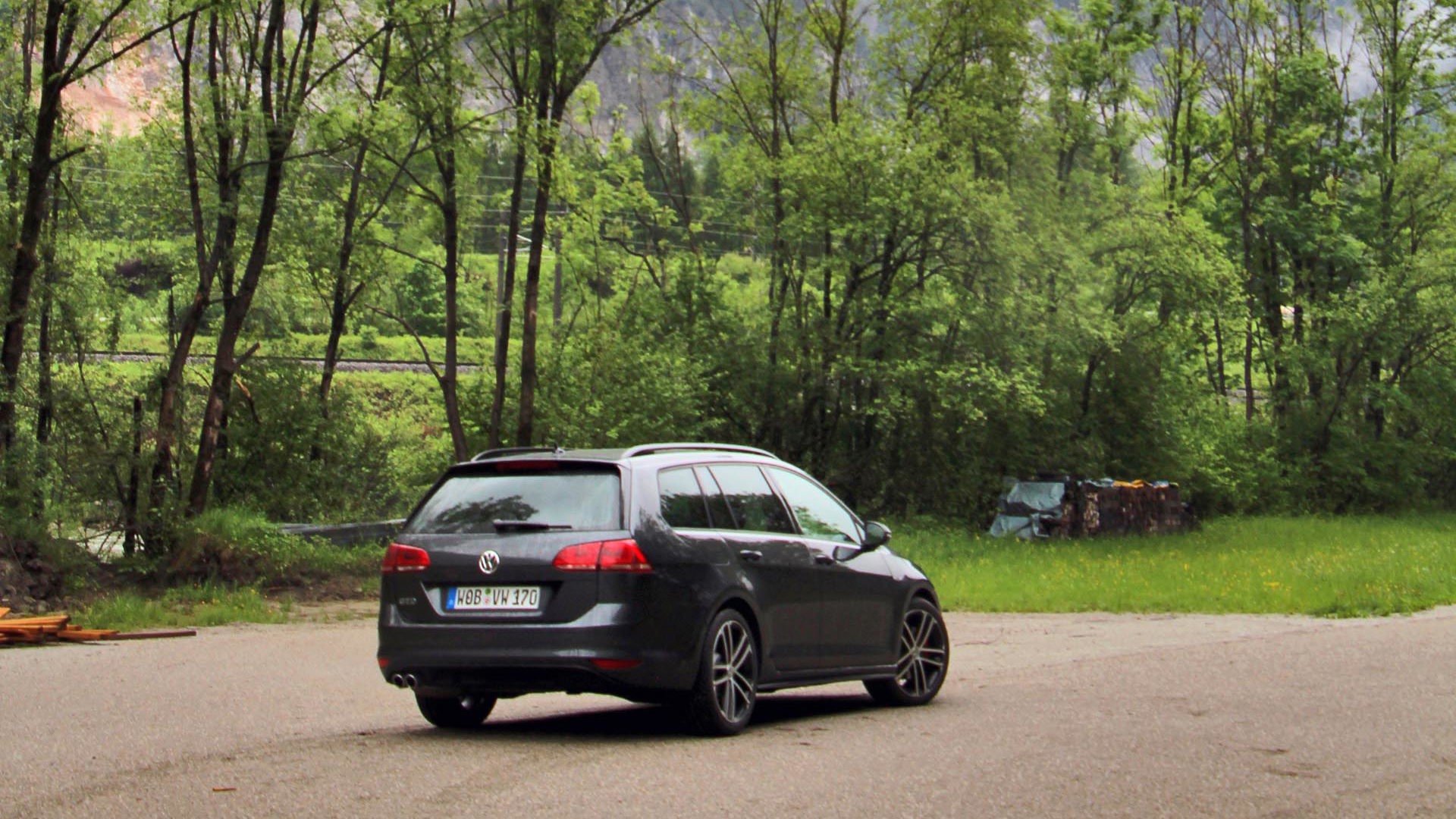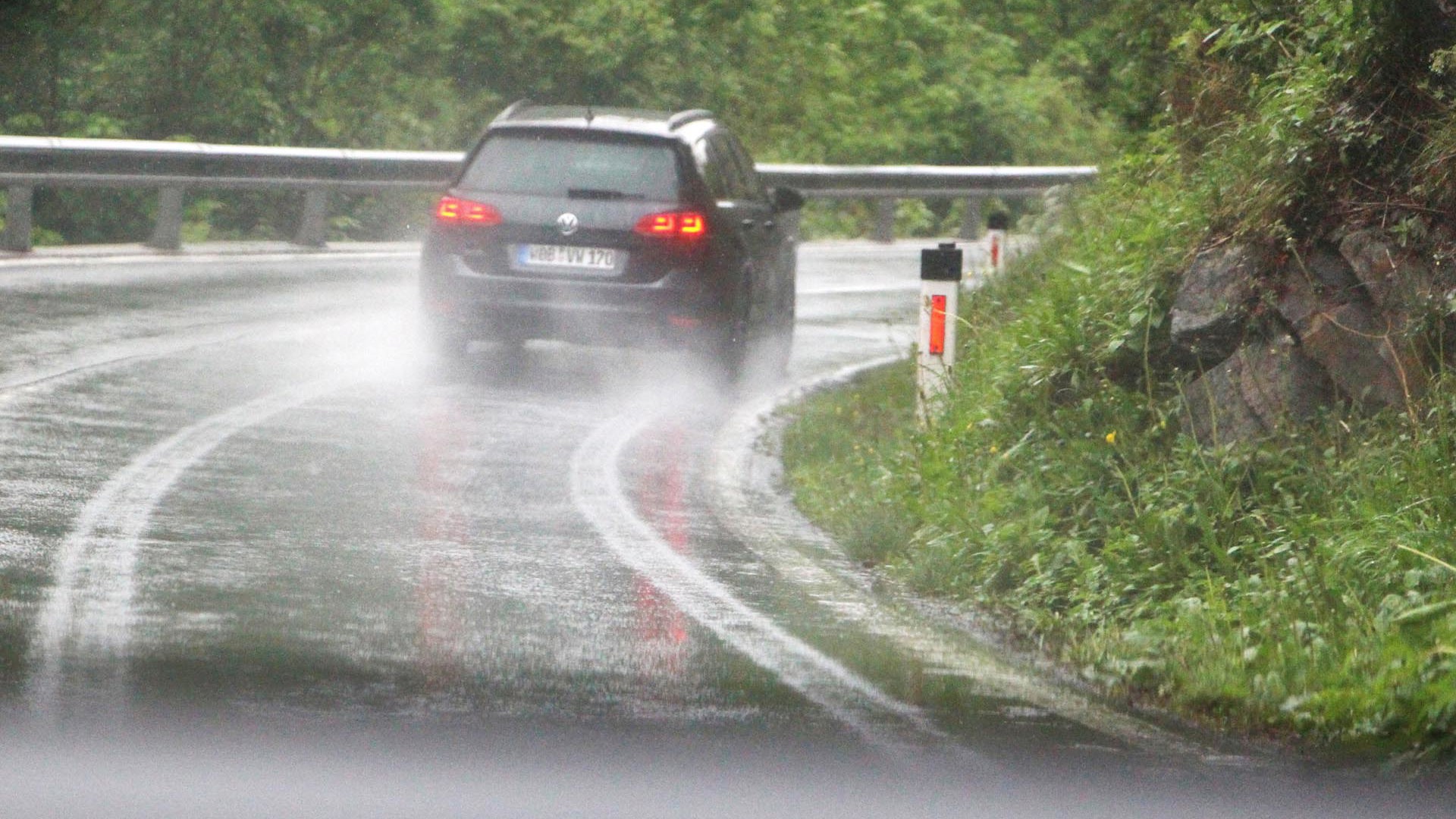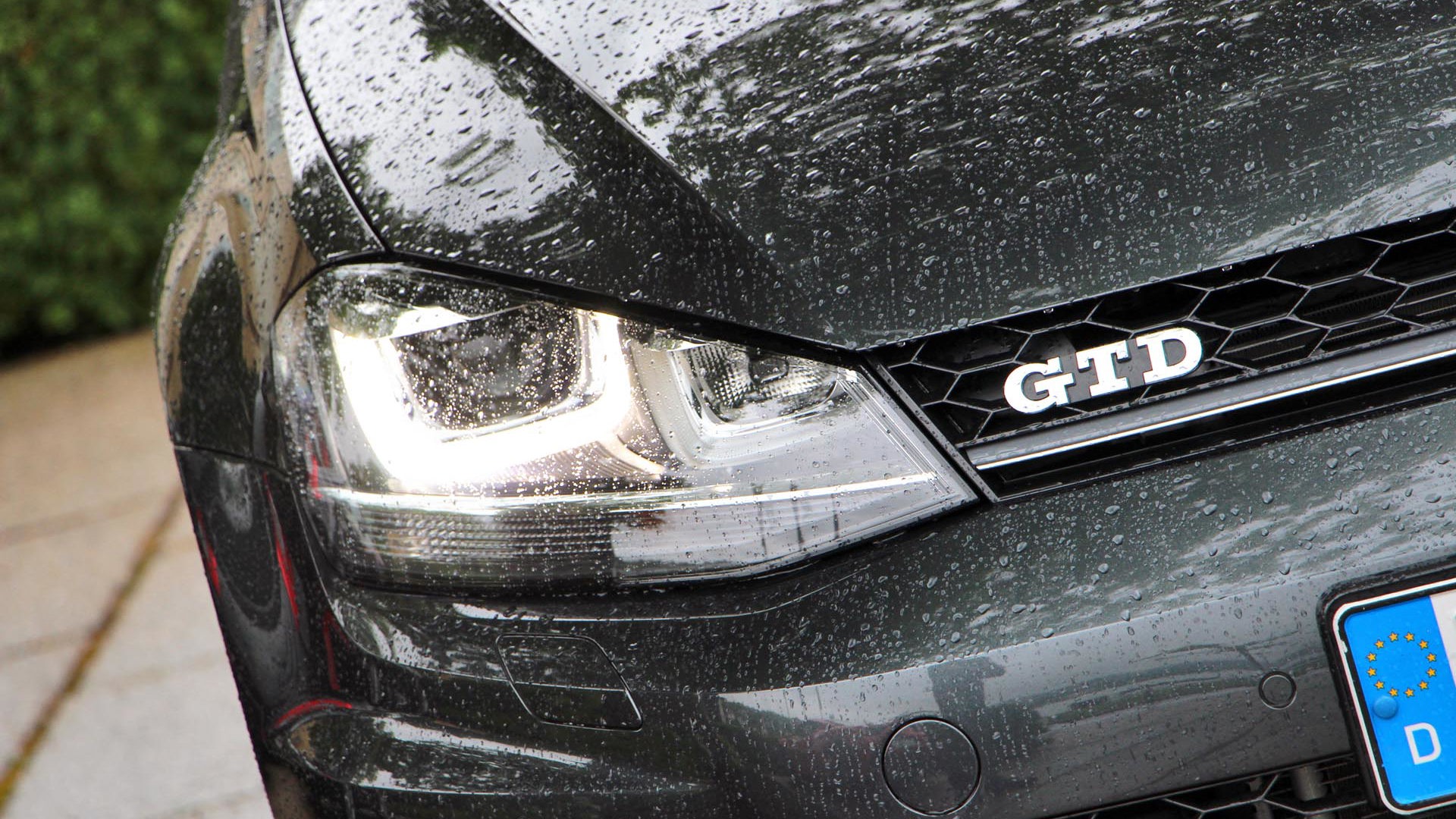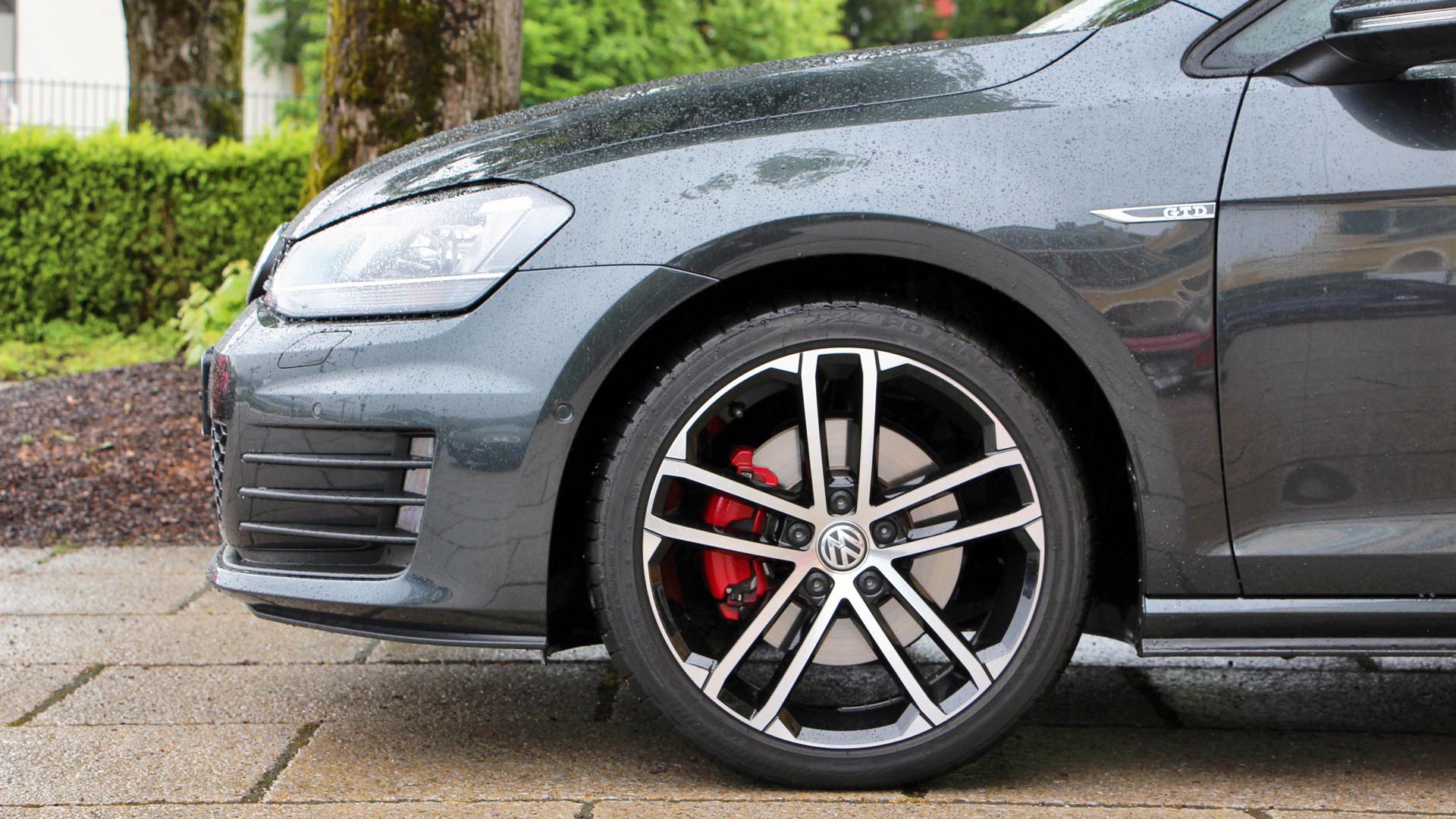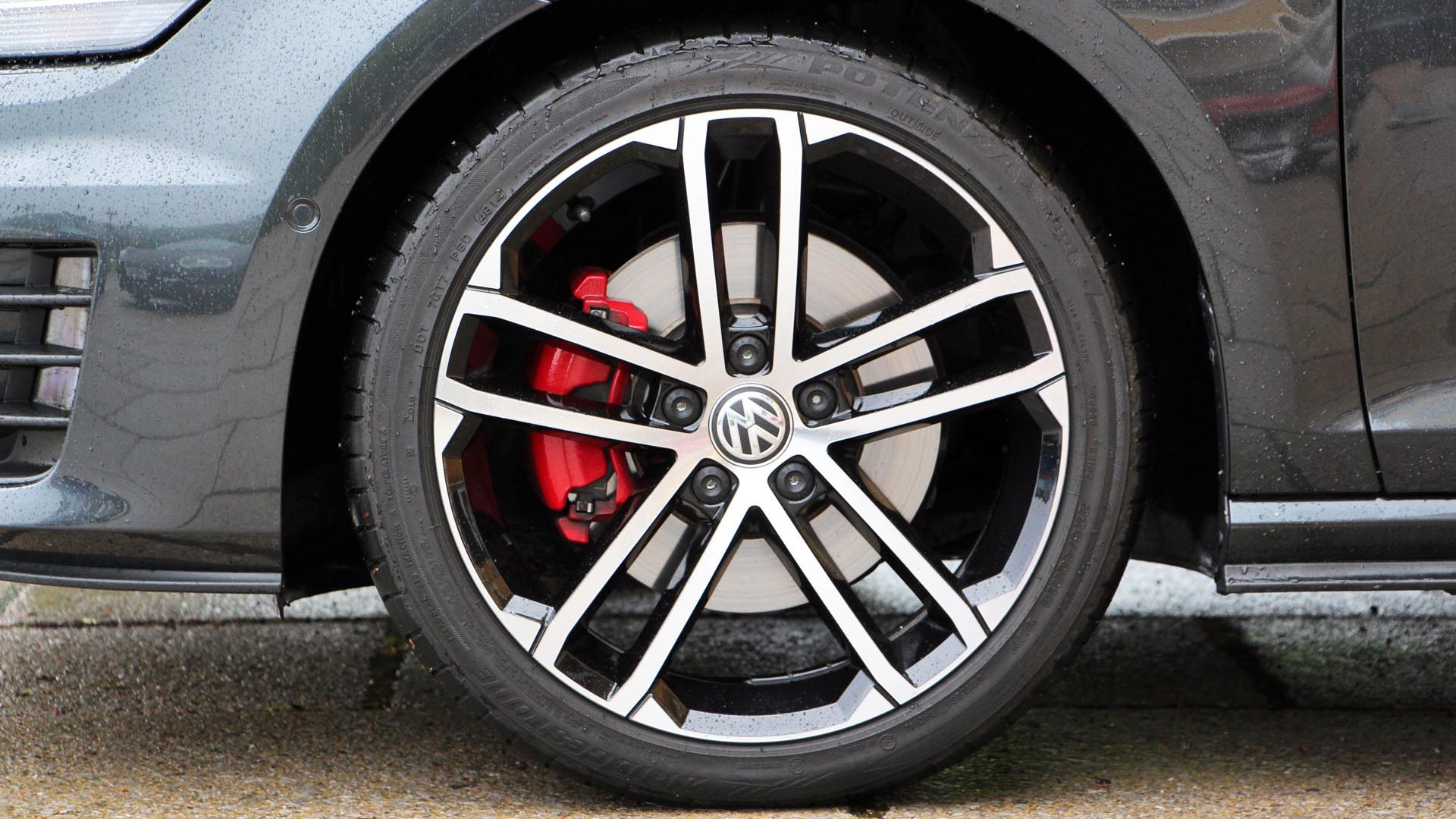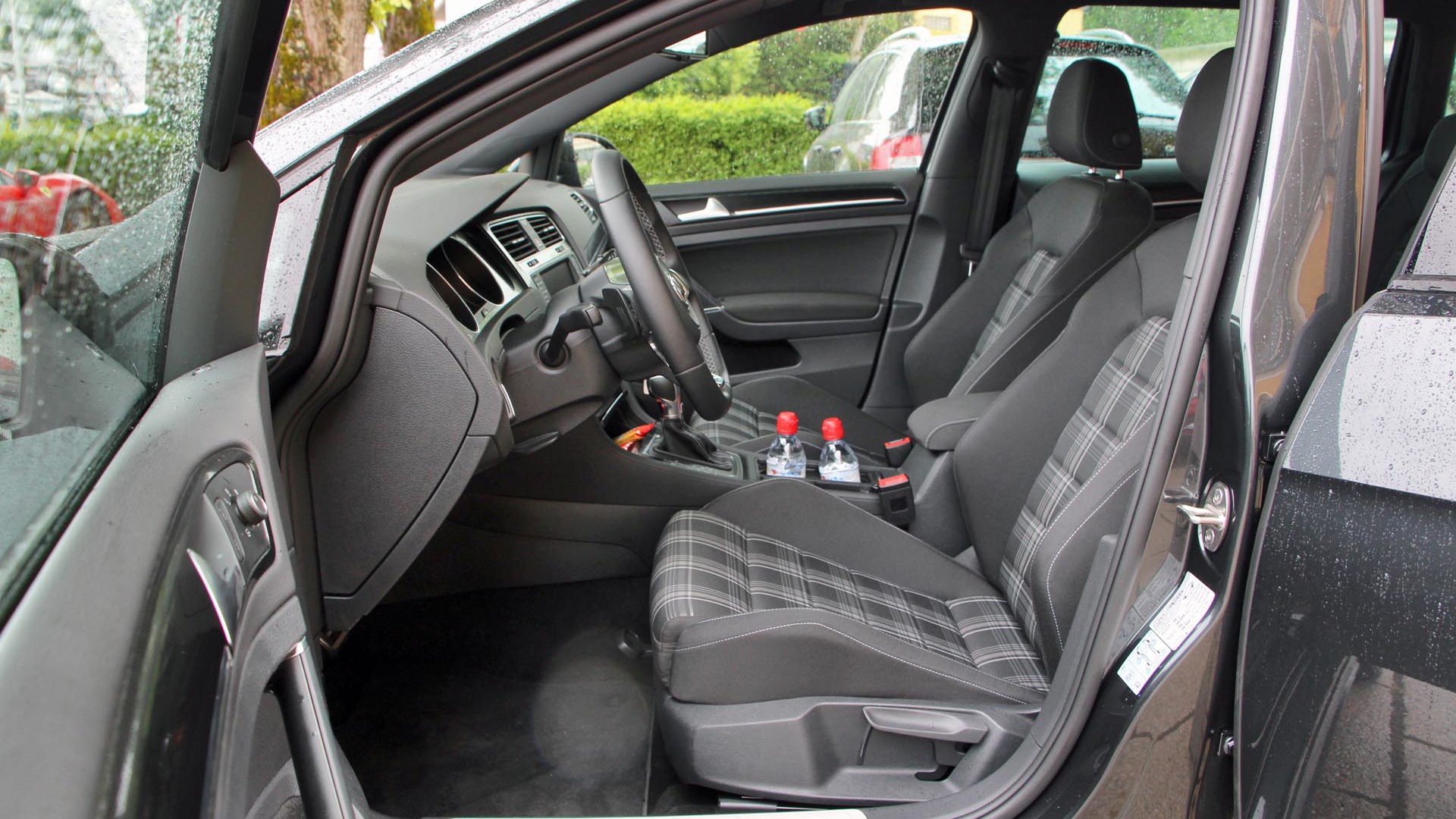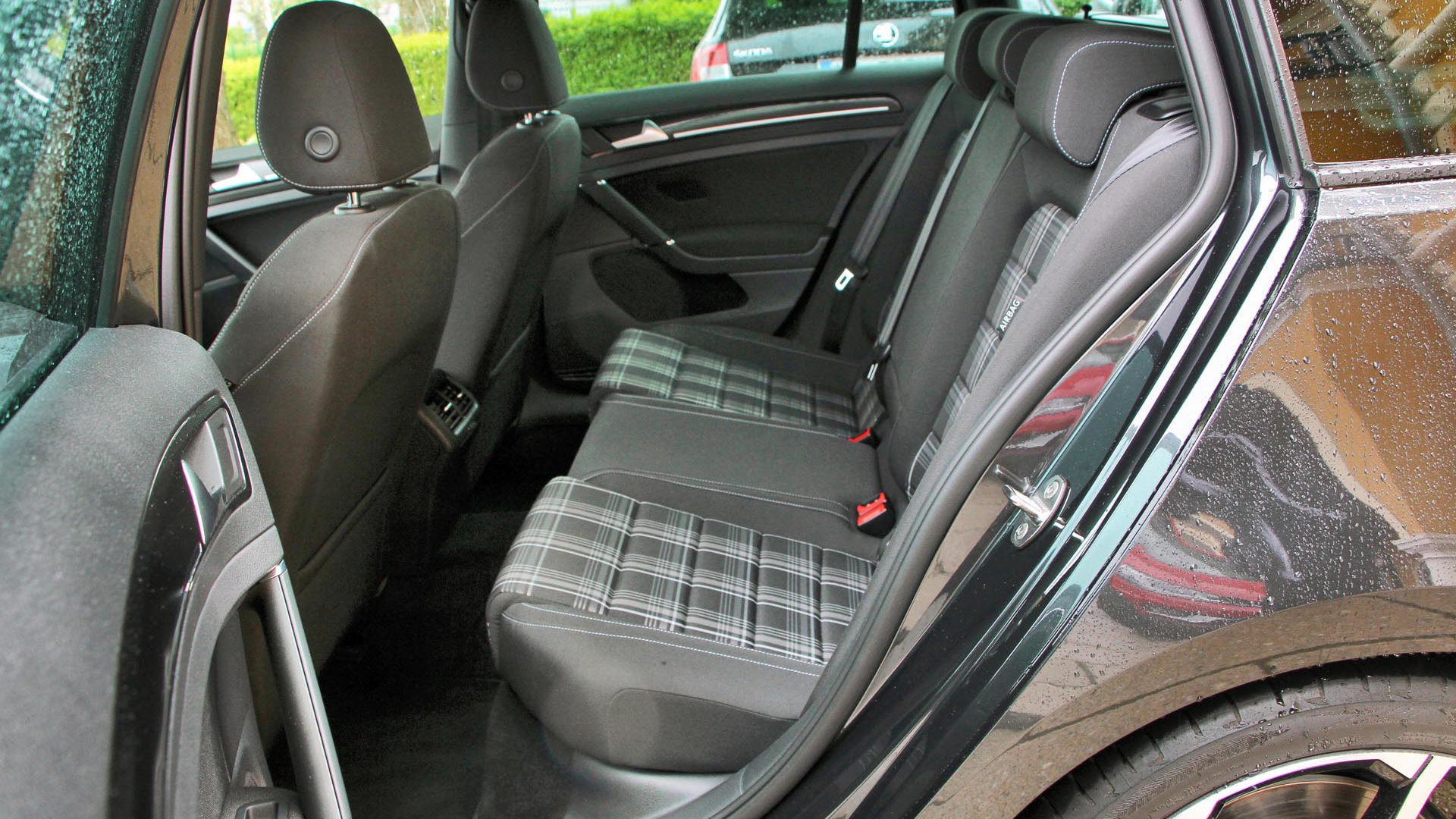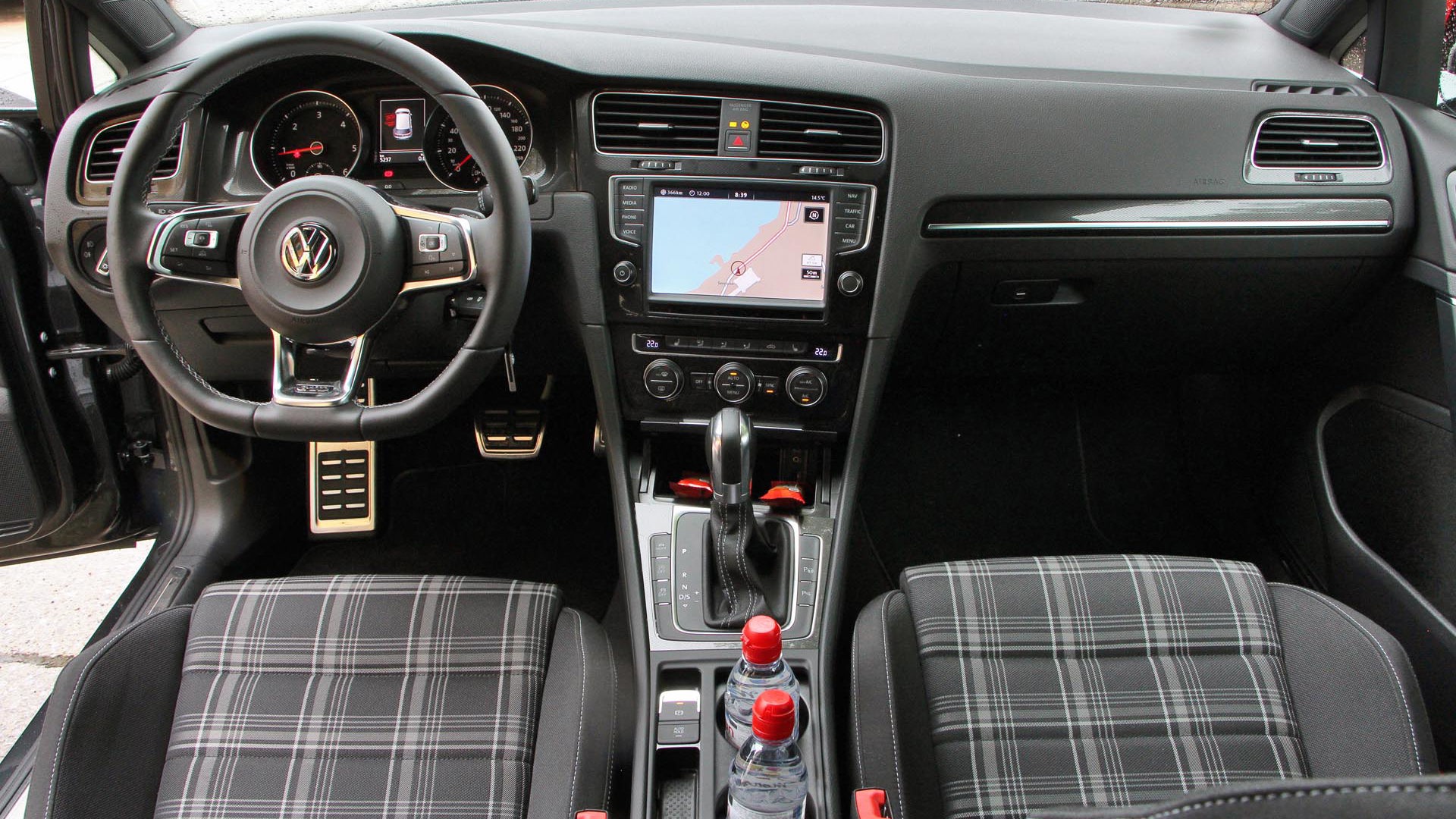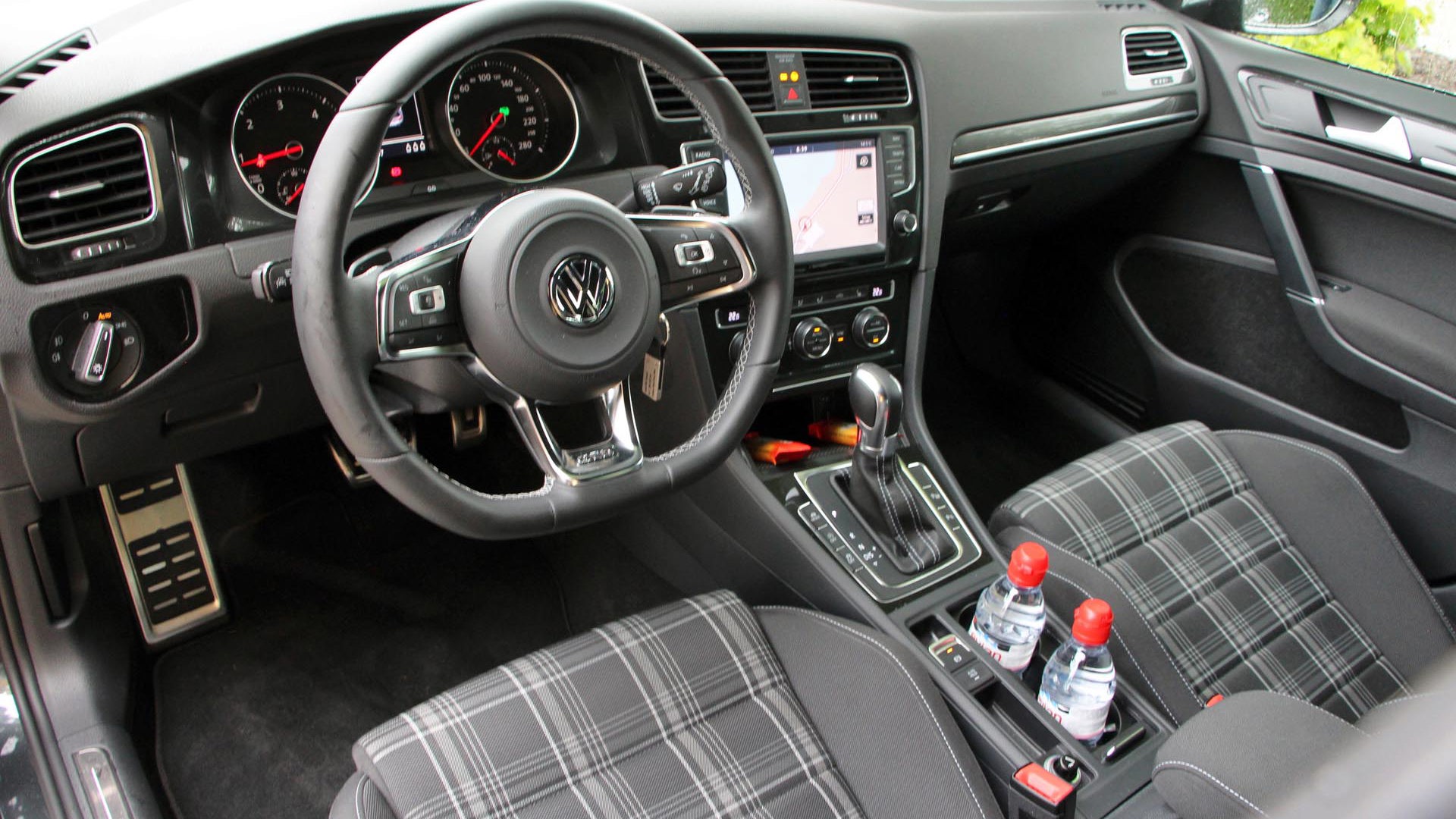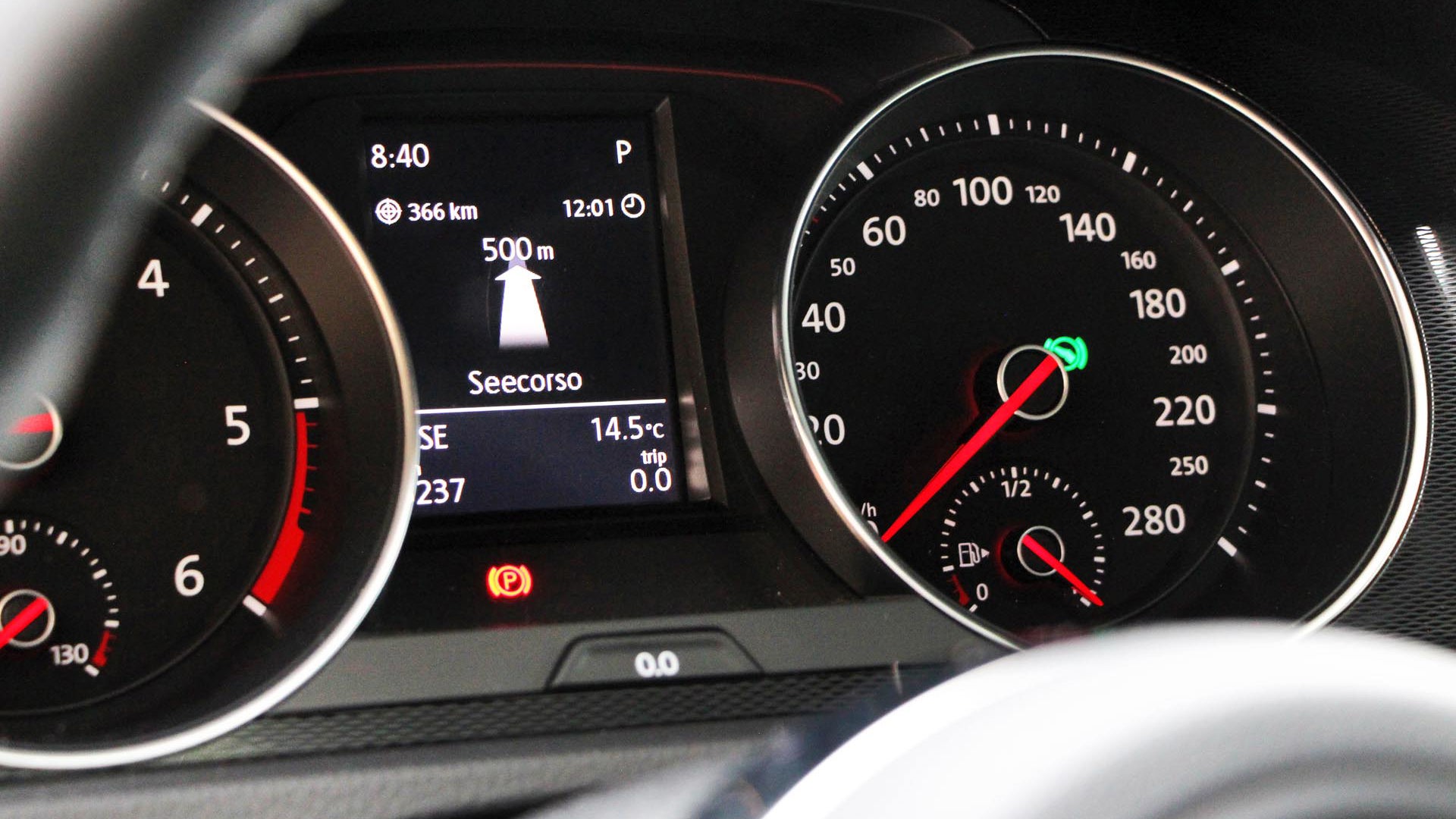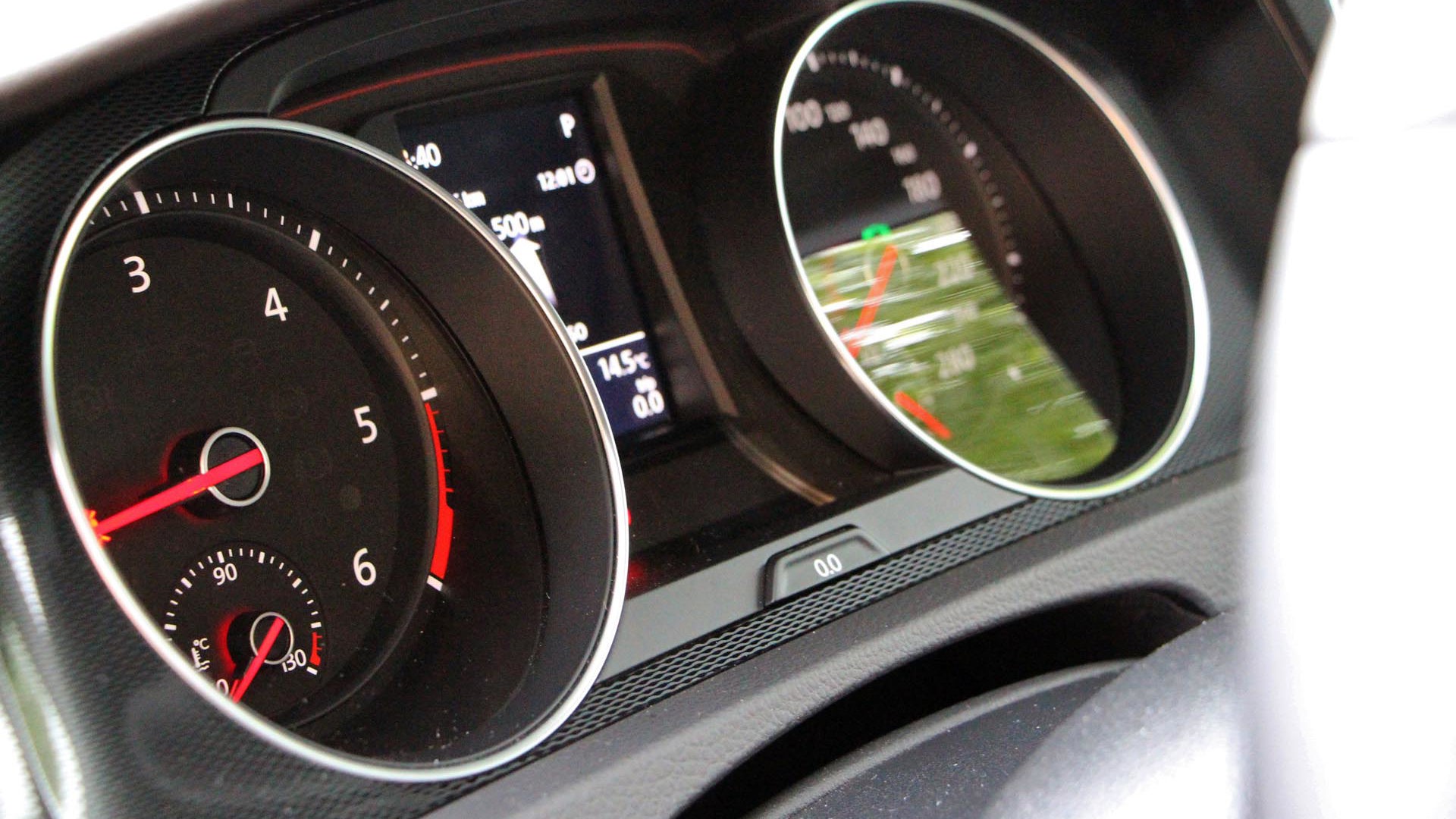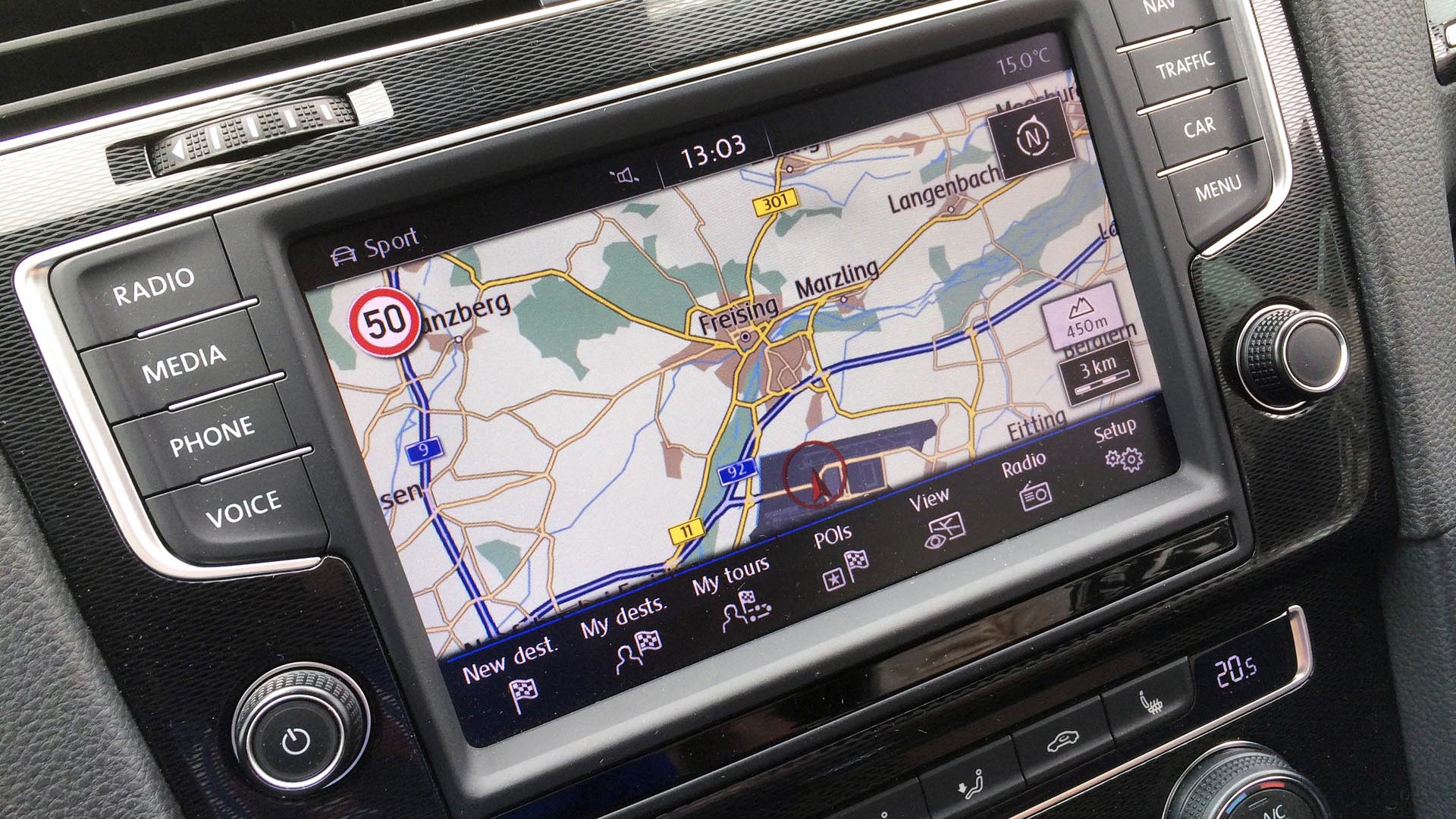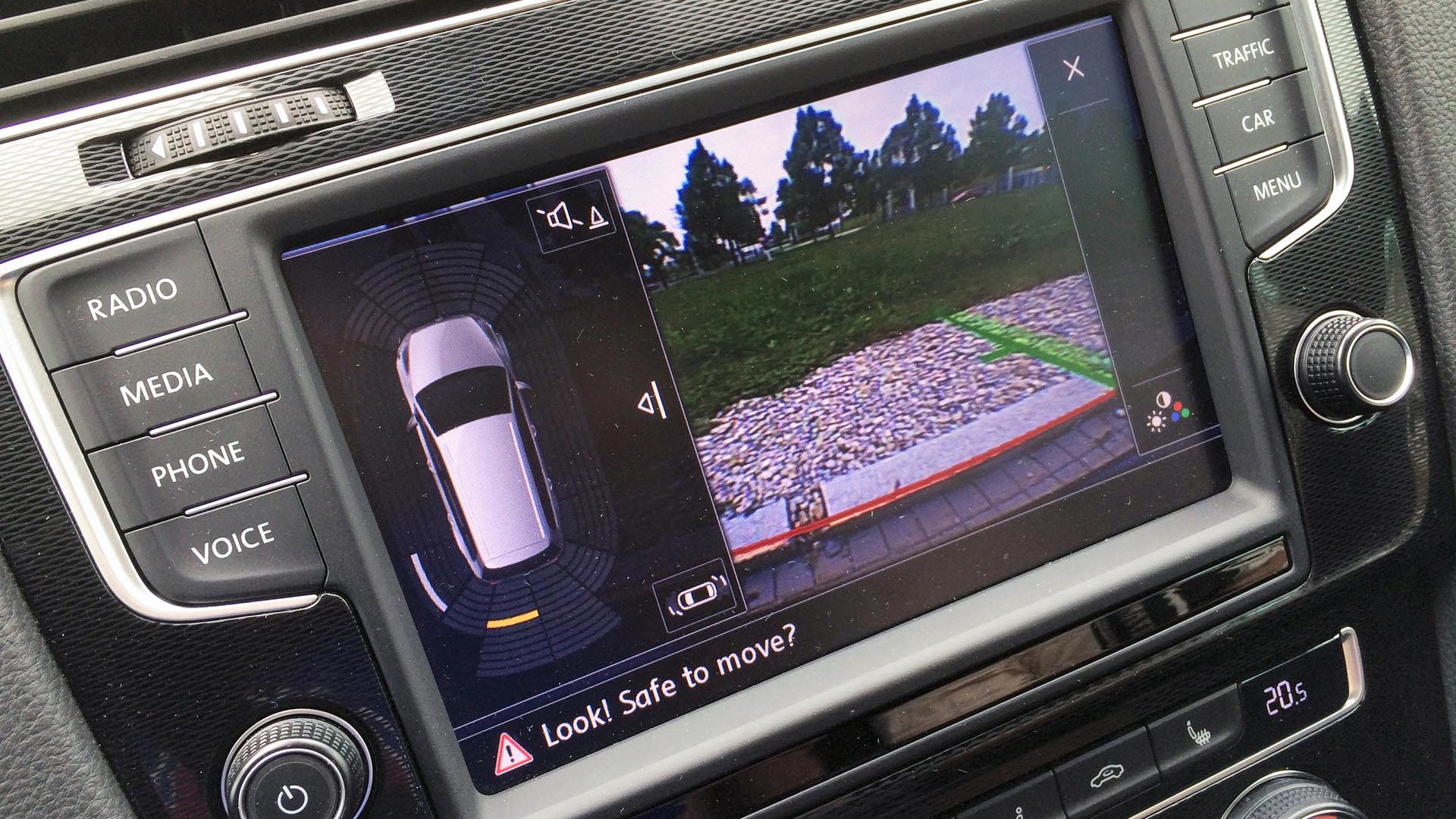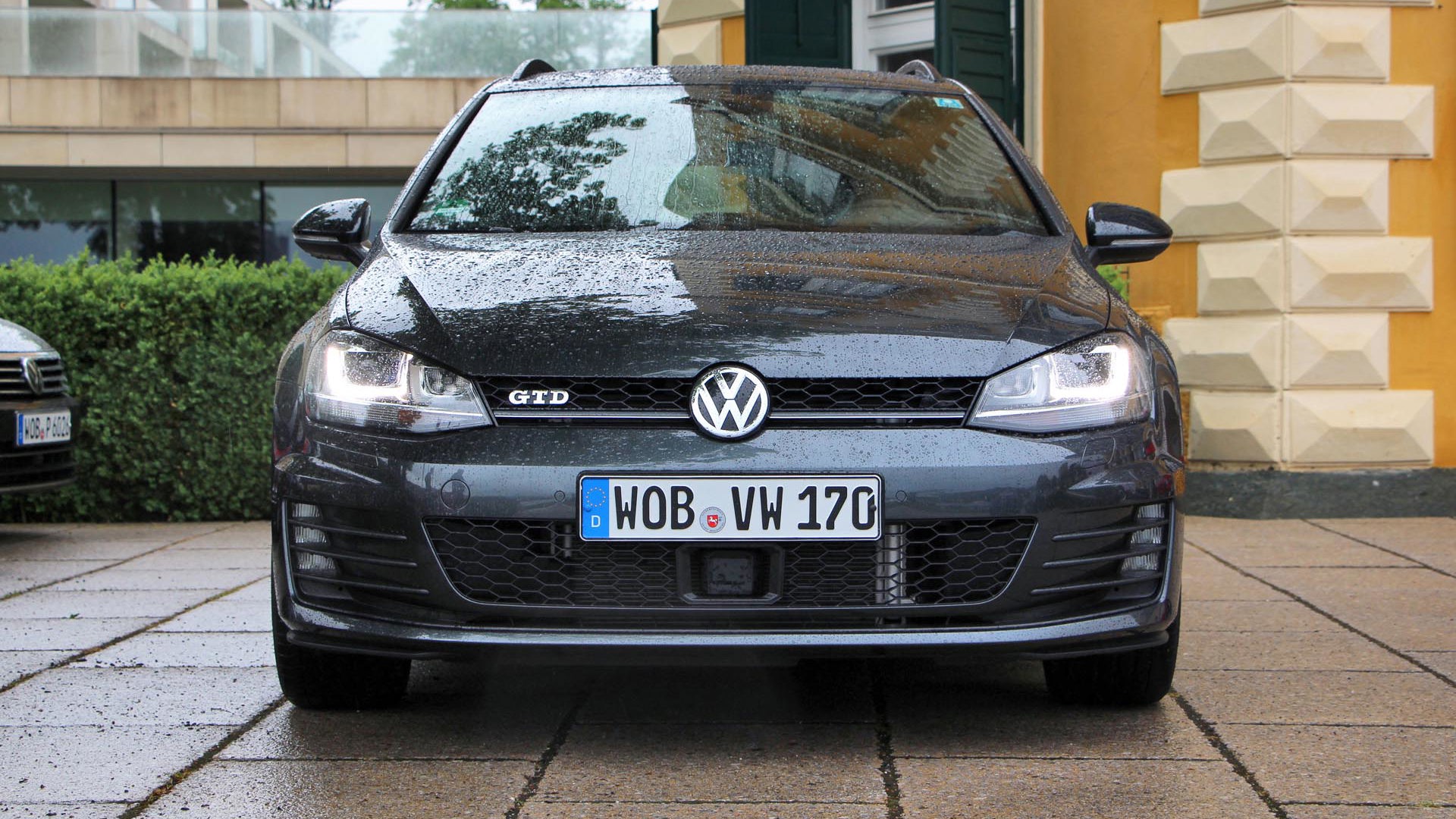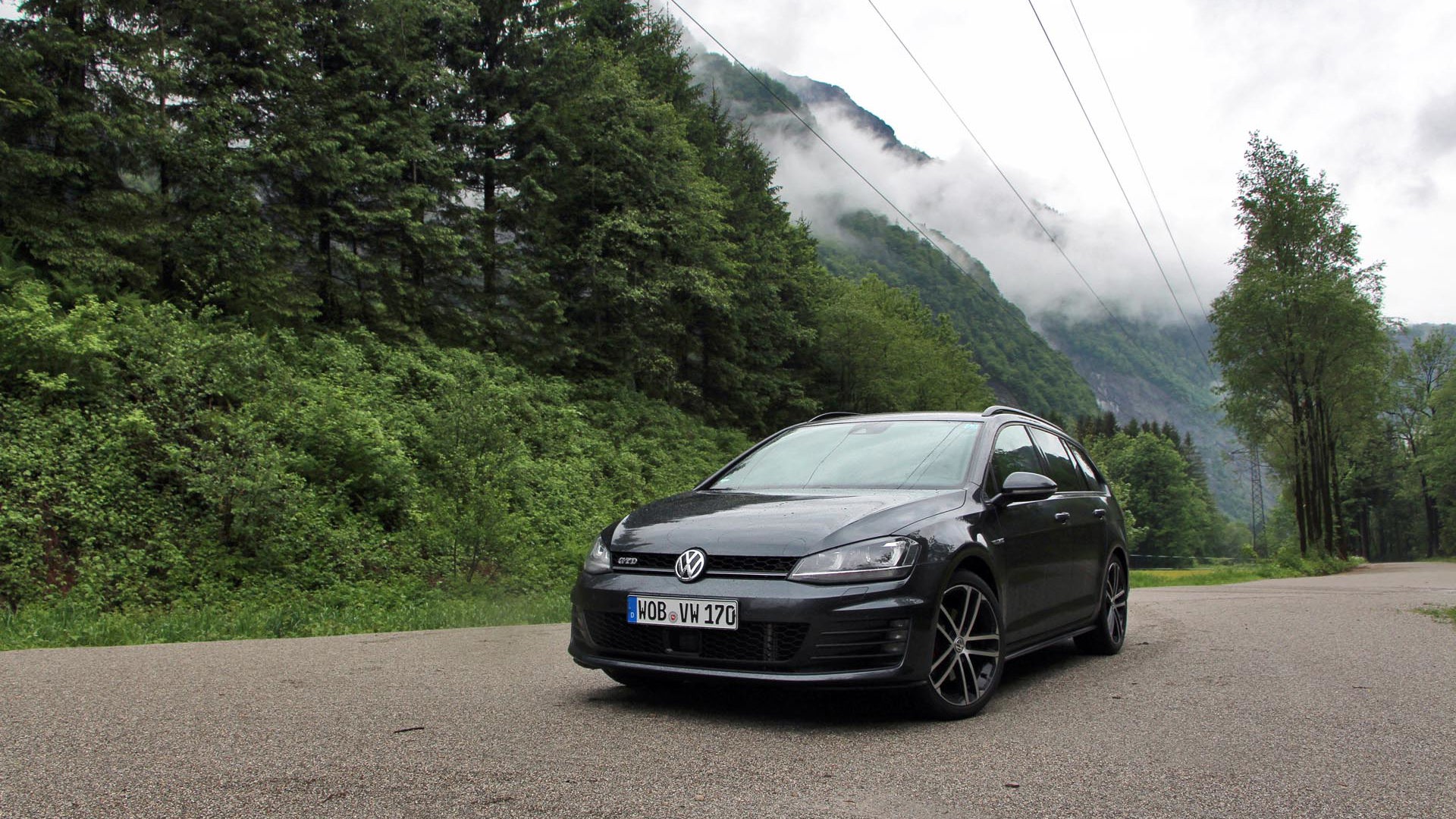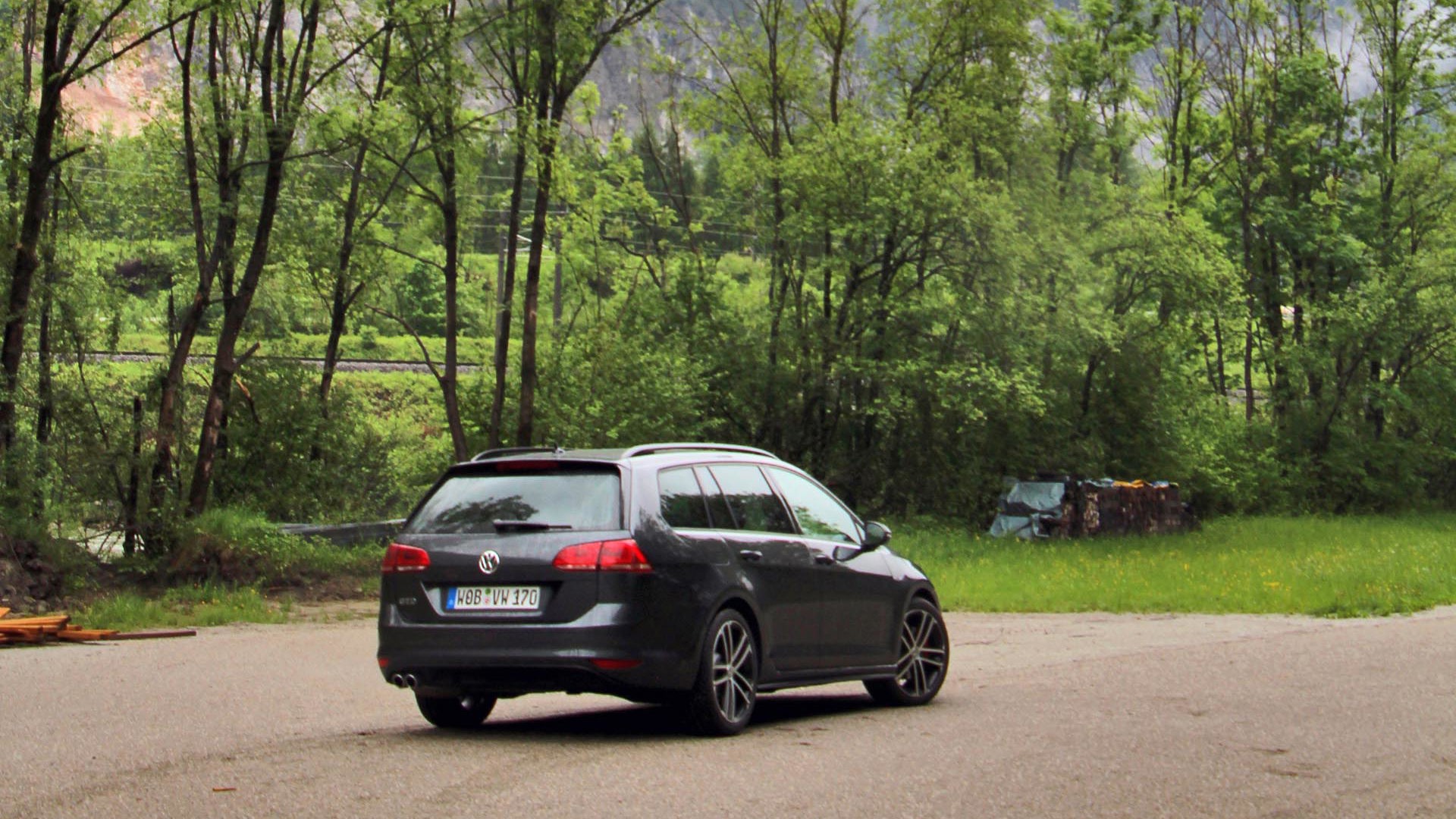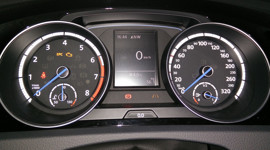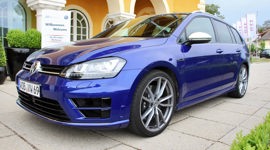First we tasted the forbidden fruit. Then we spent some time in the sure thing. Now we look at the long shot. But really, don’t hold your breath. The Volkswagen GTD is enough of a long shot that it might as well be forbidden fruit. I’ll believe it when I see it roaming the wilds of Mississauga.
Nonetheless, this here is an interesting beast, and bears further examination.
The hotted-up hatchback meets the efficient diesel wagon, a best-of-both-worlds for Volkswagen GTI and TDI Wagon fans.
A child of two worlds, if you will, the hotted-up hatchback meets the efficient diesel wagon, a best-of-both-worlds for Volkswagen GTI and TDI Wagon fans that just can’t make up their minds between frugal practicality and spicing up the daily commute or weekend excursion with the fam.
A standard Golf TDI already has a healthy 236 lb-ft of torque from VW’s 2.0L trubodiesel power plant, but its 150 hp, peaking at 3,500–4,000 rpm. Torque tapers off after 3,500 rpm. We’re no strangers to the TDI, and for its commuter mission it has great pull, but with a DSG tuned for efficiency, it lacks somewhat in responsiveness and playfulness that we idolize in the GTI.
The GTD cures this with a punchy 182 hp tune of the same 2.0L TDI, the torque cranked up to 280 lb-ft, outpulling even the standard GTI with its 258 lb-ft. Of course, where this pull is best felt is at speeds you can only experience legally in Germany.
When traffic dawdling at 140 kph in the left lane on the autobahn finally pulls over, a quick prod of the accelerator offers up a lower gear and leap forward to upwards of 180 km/h. Unfortunately, traffic meant we rarely had the opportunity to open it up to discover its full potential, but at the speeds we reached, what impressed was its stability and ease, a planted and reassuring poise that was as relaxing as kicking back on a patio and sipping on a margarita.
In the few corners we tackled on this leg of our journey, the GTD Variant showed the same dexterity we’ve come to expect from GTIs, the chassis lowered by 15 mm over the standard Variant and a firmer suspension paired with variable rate steering that firms up as you increase steering angle. This went mostly unnoticed except in that we enjoyed it as much as any other performance Volkswagen’s light but direct steering, completely natural, except perhaps when the lane keeping assist triggered a brief tug of the steering wheel to keep us between our lines.
It should be noted that with the greater engine weight typical of diesels, the GTD will likely display even greater tendency to understeer when pushed hard into corners, so the effect of an AWD drivetrain would be all the more welcome.
While VW states that the GTD Variant can reach 100 km/h in 7.9 seconds, it feels faster because of the way that torque feels so authoritative, and yet still delivers 4.4 L/100 km according to the European cycle. The GTI is about a second quicker, but rates a 5.3 L/100 km on the Euro cycle, so the GTD is about 20 percent more efficient.
As with other wagons we sampled on this event, it offered variable rate dampers, which meant we could stay in the easygoing Comfort or Normal modes, or lock it down in Sport to be ready for the slightest curve. Despite the added firmness and lowered stance of the GTD over a standard Golf TDI, even in Sport the ride was still daily-drive comfortable and quiet enough for the whole family, though Comfort definitely takes the edge off of impacts and would be the choice if junior has fallen asleep for in-car nap time.
As detailed previously second-row passenger space and cargo space are exemplary in the Variant model, its compact footprint yielding cargo space equivalent to some mid-size crossovers.
The interior finish is easily as good as anything from other mainstream brands, VW’s infotainment unit set for a bigger and better screen that will be as easy to use as the leaders in the compact class.
Our tester was equipped with the DSG dual clutch automatic, which will no doubt be more efficient and faster, but Volkswagen’s manual transmission is no doubt more engaging, and reports of its quality in the standard GTD hatch left us wanting. And hey, while we’re at it, let’s plug in the Golf R’s 4Motion AWD. Never mind the fact that there will already be challenges packaging the rear suspension around the urea tank necessary to meet North American emissions regs with the standard FWD setup, we might as well go for broke and demand AWD if we’re betting on a long shot!
Granted, there’s not much of a business case to be made for a mass-market hot diesel wagon in North America, but the higher-spec 2.0L TDI would be a great fit for the Audi A3 and Q3, not to mention as tested in the VW Golf Alltrack and the larger Passat, a mid-level TDI stepping stone short of the VW Group’s stump-pulling 428 lb-ft V6 TDI. Spreading the certification costs across a wider range of products will make it that much easier to drop it in a car that fulfills the dreams of so many enthusiasts, who are nonetheless a minority of the car-buying public.
Volkswagen, as the market leader in diesels, wagon and hot hatches, has an obligation to its fans to bring over the holy grail of enthusiast unicorns. Oh, and remember VW, it can’t cost more than $20,000.
